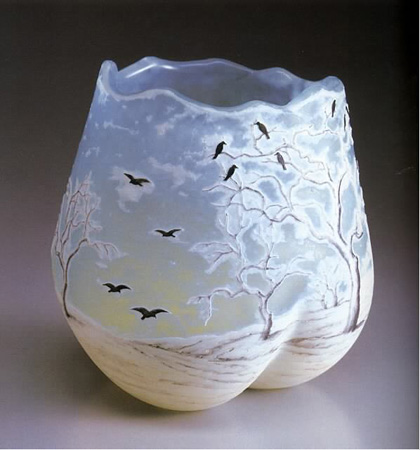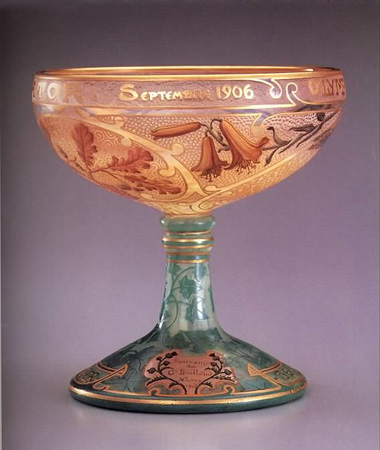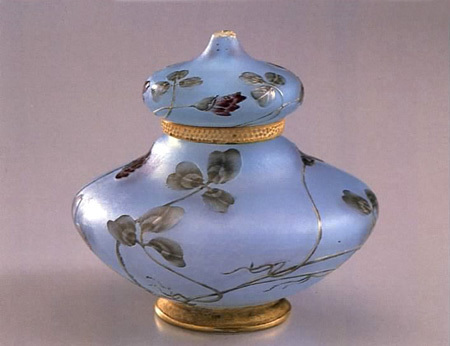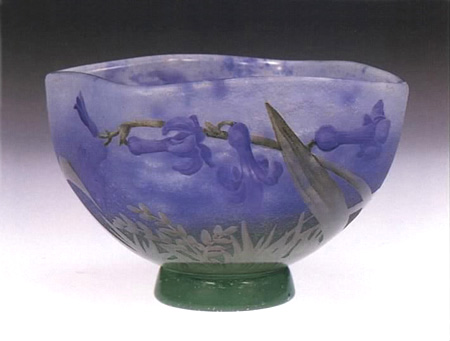
 'Taken 2' grabs movie box office crown
'Taken 2' grabs movie box office crown
 Rihanna's 'Diamonds' tops UK pop chart
Rihanna's 'Diamonds' tops UK pop chart
 Fans get look at vintage Rolling Stones
Fans get look at vintage Rolling Stones
 Celebrities attend Power of Women event
Celebrities attend Power of Women event
 Ang Lee breaks 'every rule' to make unlikely new Life of Pi film
Ang Lee breaks 'every rule' to make unlikely new Life of Pi film
 Rihanna almost thrown out of nightclub
Rihanna almost thrown out of nightclub
 'Dark Knight' wins weekend box office
'Dark Knight' wins weekend box office
 'Total Recall' stars gather in Beverly Hills
'Total Recall' stars gather in Beverly Hills
Liuli Artwork in the Summer Palace
Updated: 2012-07-18 15:29
(chinaculture.org)
|
|||||||||





Liuli(Chinese: 琉璃) means ancient Chinese glass or crystal. It has a lineage stretching back thousands of years, first making its appearance in the 11th century BC.
The art of Liuli left an indelible trail throughout Chinese history until the 19th century when China opened its door to imported goods, and effectively stifled traditional artisan skills and production of the antique Chinese art glass had dwindled following the Opium Wars.
During the reign of Emperor Kangxi in Qing Dynast(1662~1722), Liuli plants were established, producing cups, bowls, bottles, plates and snuff boxes with more than 10 colors of transparency, ivory, cream, snow, pink, red, blue, purple, yellow, green and gold. Till the reign of Emperor Qianlong, the figure reached more than twenty.
At that time, the use of Liuli, especially its specific color indicating rigid hierarchy, was strictly confined. Since yellow were exclusively used for emperors, yellow Liuli tiles could only be used on the imperial architectures. The roofs of princes’ palaces were built with green Liuli tiles and commoners were not allowed to use Liuli tiles.
The raw materials of glassware are silicates and its metallic oxides which abundantly exist in nature. After melting under high temperature they are made into sticks of different sizes and then softened on light before being handmade into final products. Unlike glaze, Liuli artwork has no mould, each one being unique as craftsmen’s improvised work. In comparison with glass, Liuli artwork has a lower melting point thus making it more colorful. Perfect glassware comes from not only good skills but also luck.
In the Summer Palace, one of the finest examples of garden architecture in Beijing, China, there is a large number of Liuli artwork that are collected and well- preserved.
Most Viewed
Editor's Picks

|

|

|

|

|

|
Today's Top News
Health new priority for quake zone
Xi meets US top military officer
Japan's boats driven out of Diaoyu
China mulls online shopping legislation
Bird flu death toll rises to 22
Putin appoints new ambassador to China
Japanese ships blocked from Diaoyu Islands
Inspired by Guan, more Chinese pick up golf
US Weekly

|

|







